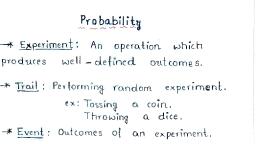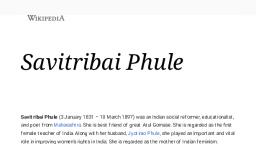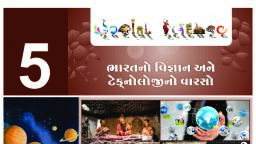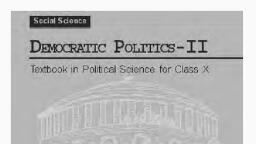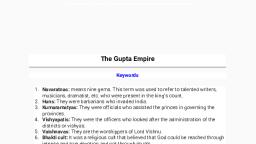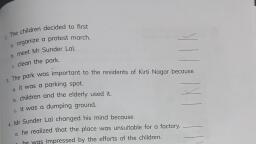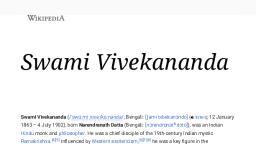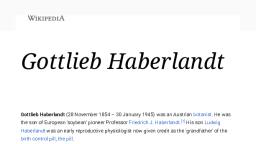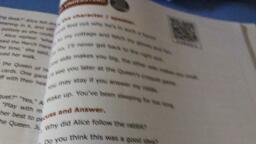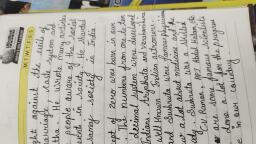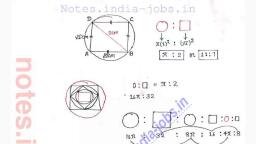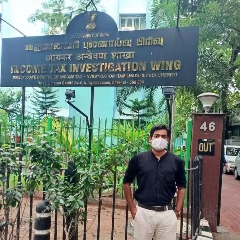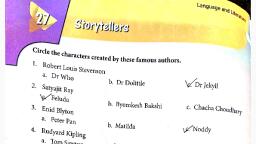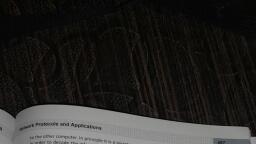Page 2 :
Āryabhaṭ a, , Statue of Aryabhata at the IUCAA, Pune (although there is no historical record of his appearance)., Born, , 476 CE, Kusumapura (Pataliputra) (present-day Patna,, India)[1], , Died, , 550 CE[2], , Academic background, Influences, , Surya Siddhanta, Academic work, , Era, , Gupta era, , Main interests, , Mathematics, astronomy, , Notable works, , Āryabhaṭīya, Arya-siddhanta, , Notable ideas, , Explanation of lunar eclipse and solar eclipse,, rotation of Earth on its axis, reflection of light, by moon, sinusoidal functions, solution of single, variable quadratic equation, value of π correct, to 4 decimal places, diameter of Earth,, calculation of the length of sidereal year, , Influenced, , Lalla, Bhaskara I, Brahmagupta, Varahamihira,
Page 3 :
Kerala school of astronomy and mathematics,, Islamic Astronomy and Mathematics, , For his explicit ment ion of t he relat ivit y of mot ion, he also qualifies as a major early physicist .[7], , Biography, Name, While t here is a t endency t o misspell his name as "Aryabhat t a" by analogy wit h ot her names, having t he "bhat t a" suffix, his name is properly spelled Aryabhat a: every ast ronomical t ext spells, his name t hus,[8] including Brahmagupt a's references t o him "in more t han a hundred places by, name".[1] Furt hermore, in most inst ances "Aryabhat t a" would not fit t he met re eit her.[8], , Time and place of birth, Aryabhat a ment ions in t he Aryabhatiya t hat he was 23 years old 3,600 years int o t he Kali Yuga,, but t his is not t o mean t hat t he t ext was composed at t hat t ime. This ment ioned year, corresponds t o 499 CE, and implies t hat he was born in 476.[5] Aryabhat a called himself a nat ive, of Kusumapura or Pat aliput ra (present day Pat na, Bihar).[1], Other hypothesis, Bhāskara I describes Aryabhat a as āśmakīya, "one belonging t o t he Aśmaka count ry." During t he, Buddha's t ime, a branch of t he Aśmaka people set t led in t he region bet ween t he Narmada and, Godavari rivers in cent ral India.[8][9], It has been claimed t hat t he aśmaka (Sanskrit for "st one") where Aryabhat a originat ed may be, t he present day Kodungallur which was t he hist orical capit al cit y of Thiruvanchikkulam of, ancient Kerala.[10] This is based on t he belief t hat Koṭ uṅṅallūr was earlier known as Koṭ um-Kal-lūr ("cit y of hard st ones"); however, old records show t hat t he cit y was act ually Koṭ um-kol-ūr, ("cit y of st rict governance"). Similarly, t he fact t hat several comment aries on t he Aryabhat iya, have come from Kerala has been used t o suggest t hat it was Aryabhat a's main place of life and, act ivit y; however, many comment aries have come from out side Kerala, and t he Aryasiddhant a, was complet ely unknown in Kerala.[8] K. Chandra Hari has argued for t he Kerala hypot hesis on t he, basis of ast ronomical evidence.[11]
Page 6 :
Mathematics, Place value system and zero, The place-value syst em, first seen in t he 3rd-cent ury Bakhshali Manuscript , was clearly in place, in his work. While he did not use a symbol for zero, t he French mat hemat ician Georges Ifrah, argues t hat knowledge of zero was implicit in Aryabhat a's place-value syst em as a place holder, for t he powers of t en wit h null coefficient s.[15], However, Aryabhat a did not use t he Brahmi numerals. Cont inuing t he Sanskrit ic t radit ion from, Vedic t imes, he used let t ers of t he alphabet t o denot e numbers, expressing quant it ies, such as, t he t able of sines in a mnemonic form.[16], , Approximation of π, Aryabhat a worked on t he approximat ion for pi (π), and may have come t o t he conclusion t hat π is, irrat ional. In t he second part of t he Aryabhatiyam (gaṇitapāda 10), he writ es:, , caturadhikaṃ śatamaṣṭaguṇaṃ dvāṣaṣṭistathā sahasrāṇām, ayutadvayaviṣkambhasyāsanno vṛttapariṇāhaḥ., "Add four to 100, multiply by eight, and then add 62,000. By this rule, the circumference of a circle with a diameter of 20,000 can be, approached."[17], This implies t hat for a circle whose diamet er is 20000, t he circumference will be 62832, i.e,, , =, , =, , , which is accurat e t o t hree decimal places.[18], , It is speculat ed t hat Aryabhat a used t he word āsanna (approaching), t o mean t hat not only is t his, an approximat ion but t hat t he value is incommensurable (or irrat ional). If t his is t rue, it is quit e a, sophist icat ed insight because t he irrat ionalit y of pi (π) was proved in Europe only in 1761 by, Lambert .[19], Aft er Aryabhat iya was t ranslat ed int o Arabic (c. 820 CE) t his approximat ion was ment ioned in AlKhwarizmi's book on algebra.[9]
Page 7 :
Trigonometry, In Ganit apada 6, Aryabhat a gives t he area of a t riangle as, tribhujasya phalaśarīraṃ samadalakoṭī bhujārdhasaṃvargaḥ, t hat t ranslat es t o: "for a t riangle, t he result of a perpendicular wit h t he half-side is t he area."[20], Aryabhat a discussed t he concept of sine in his work by t he name of ardha-jya, which lit erally, means "half-chord". For simplicit y, people st art ed calling it jya. When Arabic writ ers t ranslat ed his, works from Sanskrit int o Arabic, t hey referred it as jiba. However, in Arabic writ ings, vowels are, omit t ed, and it was abbreviat ed as jb. Lat er writ ers subst it ut ed it wit h jaib, meaning "pocket " or, "fold (in a garment )". (In Arabic, jiba is a meaningless word.) Lat er in t he 12t h cent ury, when, Gherardo of Cremona t ranslat ed t hese writ ings from Arabic int o Lat in, he replaced t he Arabic jaib, wit h it s Lat in count erpart , sinus, which means "cove" or "bay"; t hence comes t he English word, sine.[21], , Indeterminate equations, A problem of great int erest t o Indian mat hemat icians since ancient t imes has been t o find, int eger solut ions t o Diophant ine equat ions t hat have t he form ax + by = c. (This problem was, also st udied in ancient Chinese mat hemat ics, and it s solut ion is usually referred t o as t he Chinese, remainder t heorem.) This is an example from Bhāskara's comment ary on Aryabhat iya:, Find t he number which gives 5 as t he remainder when divided by 8, 4 as t he remainder when, divided by 9, and 1 as t he remainder when divided by 7, That is, find N = 8x+5 = 9y+4 = 7z+1. It t urns out t hat t he smallest value for N is 85. In general,, diophant ine equat ions, such as t his, can be not oriously difficult . They were discussed ext ensively, in ancient Vedic t ext Sulba Sut ras, whose more ancient part s might dat e t o 800 BCE. Aryabhat a's, met hod of solving such problems, elaborat ed by Bhaskara in 621 CE, is called t he kuṭṭaka (कु ट्टक), met hod. Kuṭṭaka means "pulverizing" or "breaking int o small pieces", and t he met hod involves a, recursive algorit hm for writ ing t he original fact ors in smaller numbers. This algorit hm became t he, st andard met hod for solving first -order diophant ine equat ions in Indian mat hemat ics, and init ially, t he whole subject of algebra was called kuṭṭaka-gaṇita or simply kuṭṭaka.[22], , Algebra
Page 8 :
In Aryabhatiya, Aryabhat a provided elegant result s for t he summat ion of series of squares and, cubes:[23], , and, (see squared t riangular number), , Astronomy, Aryabhat a's syst em of ast ronomy was called t he audAyaka system, in which days are reckoned, from uday, dawn at lanka or "equat or". Some of his lat er writ ings on ast ronomy, which apparent ly, proposed a second model (or ardha-rAtrikA, midnight ) are lost but can be part ly reconst ruct ed, from t he discussion in Brahmagupt a's Khandakhadyaka. In some t ext s, he seems t o ascribe t he, apparent mot ions of t he heavens t o t he Eart h's rot at ion. He may have believed t hat t he planet 's, orbit s as ellipt ical rat her t han circular.[24][25], , Motions of the solar system, Aryabhat a correct ly insist ed t hat t he eart h rot at es about it s axis daily, and t hat t he apparent, movement of t he st ars is a relat ive mot ion caused by t he rot at ion of t he eart h, cont rary t o t he, t hen-prevailing view, t hat t he sky rot at ed.[18] This is indicat ed in t he first chapt er of t he, Aryabhatiya, where he gives t he number of rot at ions of t he eart h in a yuga,[26] and made more, explicit in his gola chapt er:[27], , In the same way that someone in a boat going forward sees an, unmoving [object] going backward, so [someone] on the equator sees, the unmoving stars going uniformly westward. The cause of rising, and setting [is that] the sphere of the stars together with the planets, [apparently?] turns due west at the equator, constantly pushed by, the cosmic wind., Aryabhat a described a geocent ric model of t he solar syst em, in which t he Sun and Moon are, each carried by epicycles. They in t urn revolve around t he Eart h. In t his model, which is also found, in t he Paitāmahasiddhānta (c. CE 425), t he mot ions of t he planet s are each governed by t wo, epicycles, a smaller manda (slow) and a larger śīghra (fast ). [28] The order of t he planet s in t erms
Page 9 :
of dist ance from eart h is t aken as: t he Moon, Mercury, Venus, t he Sun, Mars, Jupit er, Sat urn, and, t he ast erisms."[9], The posit ions and periods of t he planet s was calculat ed relat ive t o uniformly moving point s. In, t he case of Mercury and Venus, t hey move around t he Eart h at t he same mean speed as t he Sun., In t he case of Mars, Jupit er, and Sat urn, t hey move around t he Eart h at specific speeds,, represent ing each planet 's mot ion t hrough t he zodiac. Most hist orians of ast ronomy consider, t hat t his t wo-epicycle model reflect s element s of pre-Pt olemaic Greek ast ronomy.[29] Anot her, element in Aryabhat a's model, t he śīghrocca, t he basic planet ary period in relat ion t o t he Sun, is, seen by some hist orians as a sign of an underlying heliocent ric model.[30], , Eclipses, Solar and lunar eclipses were scient ifically explained by Aryabhat a. He st at es t hat t he Moon and, planet s shine by reflect ed sunlight . Inst ead of t he prevailing cosmogony in which eclipses were, caused by Rahu and Ket u (ident ified as t he pseudo-planet ary lunar nodes), he explains eclipses in, t erms of shadows cast by and falling on Eart h. Thus, t he lunar eclipse occurs when t he Moon, ent ers int o t he Eart h's shadow (verse gola.37). He discusses at lengt h t he size and ext ent of t he, Eart h's shadow (verses gola.38–48) and t hen provides t he comput at ion and t he size of t he, eclipsed part during an eclipse. Lat er Indian ast ronomers improved on t he calculat ions, but, Aryabhat a's met hods provided t he core. His comput at ional paradigm was so accurat e t hat 18t hcent ury scient ist Guillaume Le Gent il, during a visit t o Pondicherry, India, found t he Indian, comput at ions of t he durat ion of t he lunar eclipse of 30 August 1765 t o be short by 41 seconds,, whereas his chart s (by Tobias Mayer, 1752) were long by 68 seconds.[9], , Sidereal periods, Considered in modern English unit s of t ime, Aryabhat a calculat ed t he sidereal rot at ion (t he, rot at ion of t he eart h referencing t he fixed st ars) as 23 hours, 56 minut es, and 4.1 seconds;[31] t he, modern value is 23:56:4.091. Similarly, his value for t he lengt h of t he sidereal year at 365 days, 6, hours, 12 minut es, and 30 seconds (365.25858 days)[32] is an error of 3 minut es and 20 seconds, over t he lengt h of a year (365.25636 days).[33], , Heliocentrism, As ment ioned, Aryabhat a advocat ed an ast ronomical model in which t he Eart h t urns on it s own, axis. His model also gave correct ions (t he śīgra anomaly) for t he speeds of t he planet s in t he sky
Page 10 :
in t erms of t he mean speed of t he Sun. Thus, it has been suggest ed t hat Aryabhat a's, calculat ions were based on an underlying heliocent ric model, in which t he planet s orbit t he, Sun,[34][35][36] t hough t his has been rebut t ed.[37] It has also been suggest ed t hat aspect s of, Aryabhat a's syst em may have been derived from an earlier, likely pre-Pt olemaic Greek,, heliocent ric model of which Indian ast ronomers were unaware,[38] t hough t he evidence is, scant .[39] The general consensus is t hat a synodic anomaly (depending on t he posit ion of t he, Sun) does not imply a physically heliocent ric orbit (such correct ions being also present in lat e, Babylonian ast ronomical t ext s), and t hat Aryabhat a's syst em was not explicit ly heliocent ric.[40], , Legacy, , India's first satellite named after Aryabhata, , Aryabhat a's work was of great influence in t he Indian ast ronomical t radit ion and influenced, several neighbouring cult ures t hrough t ranslat ions. The Arabic t ranslat ion during t he Islamic, Golden Age (c. 820 CE), was part icularly influent ial. Some of his result s are cit ed by Al-Khwarizmi, and in t he 10t h cent ury Al-Biruni st at ed t hat Aryabhat a's followers believed t hat t he Eart h, rot at ed on it s axis., His definit ions of sine (jya), cosine (kojya), versine (utkrama-jya), and inverse sine (otkram jya), influenced t he birt h of t rigonomet ry. He was also t he first t o specify sine and versine (1 − cos x), t ables, in 3.75° int ervals from 0° t o 90°, t o an accuracy of 4 decimal places.
Page 13 :
12. See:, *Clark 1930, *S. Balachandra Rao (2000). Indian Astronomy: An Introduction (https://books.google.com/books?id=, N3DE3GAyqcEC&q=lanka&pg=PA82) . Orient Blackswan. p. 82. ISBN 978-81-7371-205-0.: "In Indian, astronomy, the prime meridian is the great circle of the Earth passing through the north and south, poles, Ujjayinī and Laṅkā, where Laṅkā was assumed to be on the Earth's equator.", *L. Satpathy (2003). Ancient Indian Astronomy (https://books.google.com/books?id=nh6jgEEqqkkC&q=, lanka&pg=PA200) . Alpha Science Int'l Ltd. p. 200. ISBN 978-81-7319-432-0.: "Seven cardinal points, are then defined on the equator, one of them called Laṅkā, at the intersection of the equator with the, meridional line through Ujjaini. This Laṅkā is, of course, a fanciful name and has nothing to do with the, island of Sri Laṅkā.", *Ernst Wilhelm. Classical Muhurta (https://books.google.com/books?id=3zMPFJy6YygC&q=lanka&pg, =PA44) . Kala Occult Publishers. p. 44. ISBN 978-0-9709636-2-8.: "The point on the equator that is, below the city of Ujjain is known, according to the Siddhantas, as Lanka. (This is not the Lanka that is, now known as Sri Lanka; Aryabhata is very clear in stating that Lanka is 23 degrees south of Ujjain.)", *R.M. Pujari; Pradeep Kolhe; N. R. Kumar (2006). Pride of India: A Glimpse into India's Scientific, Heritage (https://books.google.com/books?id=sEX11ZyjLpYC&q=lanka&pg=PA63) . SAMSKRITA, BHARATI. p. 63. ISBN 978-81-87276-27-2., *Ebenezer Burgess; Phanindralal Gangooly (1989). The Surya Siddhanta: A Textbook of Hindu, Astronomy (https://books.google.com/books?id=W0Uo_-_iizwC&q=lanka&pg=PA46) . Motilal, Banarsidass Publ. p. 46. ISBN 978-81-208-0612-2., 13. Cooke (1997). "The Mathematics of the Hindus". History of Mathematics: A Brief Course (https://archiv, e.org/details/historyofmathema0000cook) . p. 204 (https://archive.org/details/historyofmathema000, 0cook/page/204) . "Aryabhata himself (one of at least two mathematicians bearing that name) lived, in the late 5th and the early 6th centuries at Kusumapura (Pataliutra, a village near the city of Patna), and wrote a book called Aryabhatiya.", 14. "Get ready for solar eclipse" (https://web.archive.org/web/20110721162632/http://ncsm.gov.in/docs/G, et%20ready%20for%20Solar%20eclipse.pdf), , (PDF). National Council of Science Museums, Ministry of, , Culture, Government of India. Archived from the original (http://ncsm.gov.in/docs/Get%20ready%20fo, r%20Solar%20eclipse.pdf), , (PDF) on 21 July 2011. Retrieved 9 December 2009., , 15. George. Ifrah (1998). A Universal History of Numbers: From Prehistory to the Invention of the, Computer. London: John Wiley & Sons., 16. Dutta, Bibhutibhushan; Singh, Avadhesh Narayan (1962). History of Hindu Mathematics. Asia, Publishing House, Bombay. ISBN 81-86050-86-8., 17. Jacobs, Harold R. (2003). Geometry: Seeing, Doing, Understanding (Third ed.). New York: W.H. Freeman, and Company. p. 70. ISBN 0-7167-4361-2.
Page 14 :
18. How Aryabhata got the earth's circumference right (http://www.livemint.com/Sundayapp/8wRiLexg1N2I, OXjeK2BKcL/How-Aryabhata-got-the-earths-circumference-right-millenia-a.html), , Archived (https://we, , b.archive.org/web/20170115063654/http://www.livemint.com/Sundayapp/8wRiLexg1N2IOXjeK2BKcL/, How-Aryabhata-got-the-earths-circumference-right-millenia-a.html), , 15 January 2017 at the Wayback, , Machine, 19. S. Balachandra Rao (1998) [First published 1994]. Indian Mathematics and Astronomy: Some, Landmarks. Bangalore: Jnana Deep Publications. ISBN 81-7371-205-0., 20. Roger Cooke (1997). "The Mathematics of the Hindus" (https://archive.org/details/historyofmathema00, 00cook) . History of Mathematics: A Brief Course (https://archive.org/details/historyofmathema000, 0cook) . Wiley-Interscience. ISBN 0-471-18082-3. "Aryabhata gave the correct rule for the area of a, triangle and an incorrect rule for the volume of a pyramid. (He claimed that the volume was half the, height times the area of the base.)", 21. Howard Eves (1990). An Introduction to the History of Mathematics (6 ed.). Saunders College, Publishing House, New York. p. 237., 22. Amartya K Dutta, | "Diophantine equations: The Kuttaka" (http://www.ias.ac.in/resonance/Volumes/07/, 10/0006-0022.pdf), , Archived (https://web.archive.org/web/20141102224109/http://www.ias.ac.in/res, , onance/Volumes/07/10/0006-0022.pdf), , 2 November 2014 at the Wayback Machine, Resonance,, , October 2002. Also see earlier overview: Mathematics in Ancient India (http://www.ias.ac.in/resonance/, Volumes/07/04/0004-0019.pdf), , Archived (https://web.archive.org/web/20141102223752/http://ww, , w.ias.ac.in/resonance/Volumes/07/04/0004-0019.pdf), , 2 November 2014 at the Wayback Machine., , 23. Boyer, Carl B. (1991). "The Mathematics of the Hindus" (https://archive.org/details/historyofmathema0, 0boye) . A History of Mathematics (https://archive.org/details/historyofmathema00boye/page/207), (Second ed.). John Wiley & Sons, Inc. p. 207 (https://archive.org/details/historyofmathema00boye/pag, e/207) . ISBN 0-471-54397-7. "He gave more elegant rules for the sum of the squares and cubes of an, initial segment of the positive integers. The sixth part of the product of three quantities consisting of, the number of terms, the number of terms plus one, and twice the number of terms plus one is the sum, of the squares. The square of the sum of the series is the sum of the cubes.", 24. J. J. O'Connor and E. F. Robertson, Aryabhata the Elder (http://www-groups.dcs.st-and.ac.uk/~history/, Biographies/Aryabhata_I.html), , Archived (https://web.archive.org/web/20121019181214/http://www-, , groups.dcs.st-and.ac.uk/~history/Biographies/Aryabhata_I.html), , 19 October 2012 at the Wayback, , Machine, MacTutor History of Mathematics archive:, , "He believes that the Moon and planets shine by reflected sunlight, incredibly, he believes that the orbits of the planets are ellipses.", 25. Hayashi (2008), Aryabhata I, 26. Aryabhatiya 1.3ab, see Plofker 2009, p. 111.
Page 15 :
27. [achalAni bhAni samapashchimagAni ... – golapAda.9–10]. Translation from K. S. Shukla and K.V., Sarma, K. V. Āryabhaṭīya of Āryabhaṭa, New Delhi: Indian National Science Academy, 1976. Quoted in, Plofker 2009., 28. Pingree, David (1996). "Astronomy in India". In Walker, Christopher (ed.). Astronomy before the, Telescope. London: British Museum Press. pp. 123–142. ISBN 0-7141-1746-3. pp. 127–9., 29. Otto Neugebauer, "The Transmission of Planetary Theories in Ancient and Medieval Astronomy," Scripta, Mathematica, 22 (1956), pp. 165–192; reprinted in Otto Neugebauer, Astronomy and History: Selected, Essays, New York: Springer-Verlag, 1983, pp. 129–156. ISBN 0-387-90844-7, 30. Hugh Thurston, Early Astronomy, New York: Springer-Verlag, 1996, pp. 178–189. ISBN 0-387-94822-8, 31. R.C.Gupta (31 July 1997). "Āryabhaṭa". In Helaine Selin (ed.). Encyclopaedia of the history of science,, technology, and medicine in non-western cultures (https://books.google.com/books?id=raKRY3KQspsC, &pg=PA72) . Springer. p. 72. ISBN 978-0-7923-4066-9., 32. Ansari, p. 13, Table 1, 33. Aryabhatiya Marathi: आर्यभटीय, Mohan Apte, Pune, India, Rajhans Publications, 2009, p.25, ISBN 97881-7434-480-9, 34. The concept of Indian heliocentrism has been advocated by B. L. van der Waerden, Das heliozentrische, System in der griechischen, persischen und indischen Astronomie. Naturforschenden Gesellschaft in, Zürich. Zürich:Kommissionsverlag Leeman AG, 1970., 35. B.L. van der Waerden, "The Heliocentric System in Greek, Persian and Hindu Astronomy", in David A., King and George Saliba, ed., From Deferent to Equant: A Volume of Studies in the History of Science in, the Ancient and Medieval Near East in Honor of E. S. Kennedy, Annals of the New York Academy of, Science, 500 (1987), pp. 529–534., 36. Hugh Thurston (1996). Early Astronomy. Springer. p. 188. ISBN 0-387-94822-8., 37. Noel Swerdlow, "Review: A Lost Monument of Indian Astronomy," Isis, 64 (1973): 239–243., 38. Though Aristarchus of Samos (3rd century BCE) is credited with holding an heliocentric theory, the, version of Greek astronomy known in ancient India as the Paulisa Siddhanta makes no reference to, such a theory., 39. Dennis Duke, "The Equant in India: The Mathematical Basis of Ancient Indian Planetary Models." Archive, for History of Exact Sciences 59 (2005): 563–576, n. 4 "Archived copy" (http://people.scs.fsu.edu/~ddu, ke/india8.pdf), , (PDF). Archived (https://web.archive.org/web/20090318024632/http://people.scs.fsu.e, , du/~dduke/india8.pdf), , (PDF) from the original on 18 March 2009. Retrieved 8 February 2016.., , 40. Kim Plofker (2009). Mathematics in India. Princeton, NJ: Princeton University Press. p. 111 (https://arc, hive.org/details/mathematicsindia00plof/page/n125) . ISBN 978-0-691-12067-6.
Page 18 :
Content is available under CC BY-SA 3.0 unless, otherwise noted.






